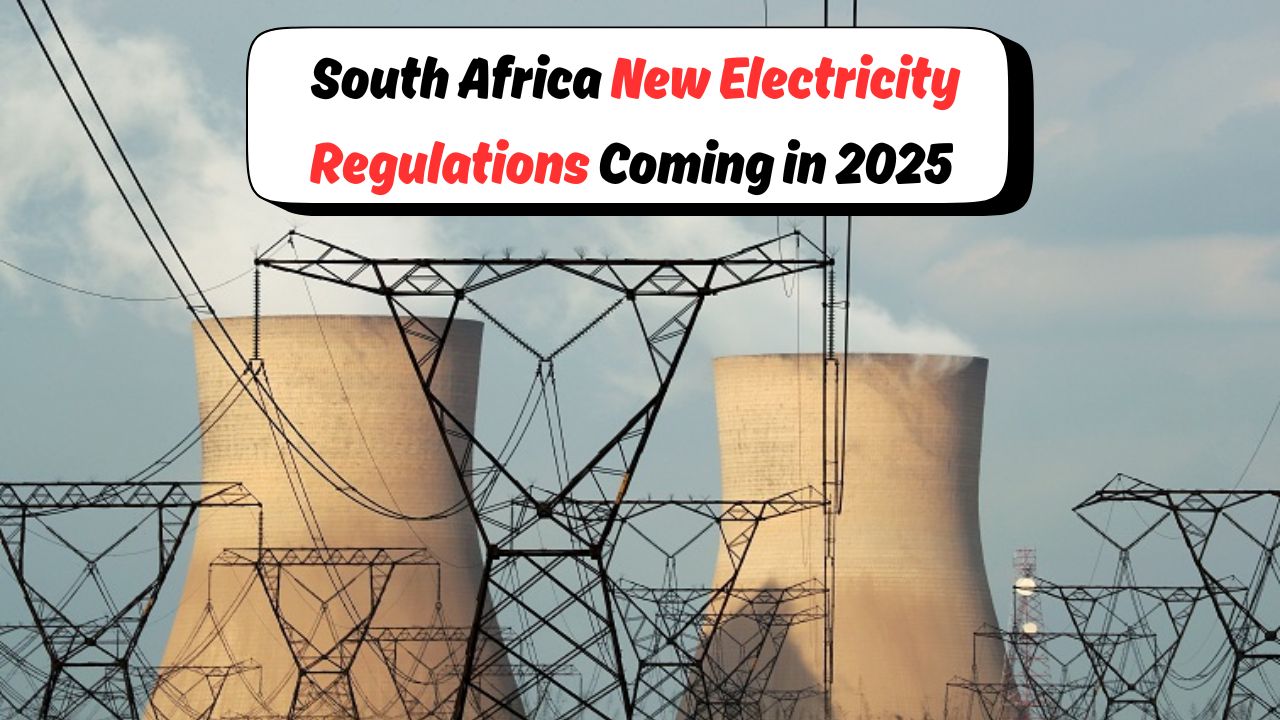South Africa Electricity Law – Electricity rules in South Africa are being tightened in 2025 to protect consumers, improve supply, and speed up the shift to cleaner generation. For households, the biggest changes revolve around clearer billing, stricter meter standards, and more transparent load-shedding communications from municipalities and Eskom. You can expect plainer tariffs, itemised charges that separate energy, network and levies, and better dispute routes when a bill looks wrong. Prepaid customers should see clearer token information and formal rules on refunds when a faulty meter or vending error is proven. Smart-meter rollouts will accelerate, with stronger data-privacy obligations and standards for remote disconnections and reconnections. Rooftop-solar owners will have more defined arrangements for feeding excess power into local grids, including published credit rates and timelines for account settlements. Alongside rights, penalties for meter tampering and illegal connections are being tightened, and landlords, body corporates and resellers face clearer duties. Below are the key rules every consumer should understand—and practical steps to stay compliant and save money.
What’s changing for households in 2025
Expect simpler language on bills, mandatory breakdowns of energy use versus fixed network costs, and upfront disclosure of all municipal surcharges and environmental levies. Suppliers must provide clearer contact paths for queries, with service-level timelines to acknowledge and resolve disputes. Where smart meters are installed, you should receive access to interval-use data so you can compare time-of-use tariffs and shift consumption to cheaper periods. Disconnection processes are being formalised: written notice, a stated remedy window, and proof of meter accuracy before supply is cut, except in emergencies or safety risks. For prepaid, new rules emphasise token portability after meter replacements, documented refunds for vending failures, and transparent handling of arrears recovery from future purchases. Municipalities and Eskom are expected to publish planned outage schedules and give prompt cause-and-restoration updates for unplanned faults. Vulnerable users—such as lifeline or indigent households—should see reinforced protections, including priority restoration and clear criteria for qualifying for support tariffs.
Bills, tariffs and prepaid meters: what to watch
Start by checking your tariff code on each statement: residential conventional, prepaid, or time-of-use. New transparency requirements mean suppliers must show how each rand of your payment is allocated, including any arrears recovery percentages and fixed daily charges. If your bill spikes, request a meter test and historic-usage report; the supplier should provide results and a corrective plan if the meter is inaccurate or estimated reads were misapplied. For prepaid users, keep vending receipts and screenshots; refund claims generally require token IDs and timestamps. When a meter is replaced, ensure closing and opening balances are recorded in writing to prevent double-billing. Watch for seasonal or peak-period rates under time-of-use plans and consider shifting high-load activities—geysers, pool pumps, EV charging—into off-peak hours. Finally, review reseller arrangements in complexes: the reseller must not charge more than the approved municipal/Eskom tariff plus published service fees, and must offer itemised statements and a clear, independent dispute process.
Your rights during outages, load-shedding and faults
Providers must publish load-shedding stages, planned maintenance windows and restoration estimates, then update them when conditions change. During unplanned outages, you’re entitled to log a fault and receive a reference number, with progress updates provided within stated service timelines. If a voltage incident damages appliances, document everything—photos, invoices, and a technician’s fault report—and file a claim promptly following the supplier’s published process. Medical-priority customers can request special consideration; while continuous supply isn’t guaranteed, prioritisation and tailored communication should be available once you’re registered. For disconnections due to debt, you should receive written notice, a repayment or payment-arrangement option, and information on indigent support if applicable. Remote disconnections via smart meters must be logged and reversible once payment or agreement is confirmed. Where prolonged outages occur, municipalities should offer alternative water or charging points and clear safety guidance. Keep surge protection fitted, and treat any downed line as live—report hazards immediately and keep a safe distance.
Solar, generators and resale in complexes
If you own rooftop solar, expect clearer interconnection steps: compliance certificates, anti-islanding protection, and approval timelines before energising. Feed-in credits will be set out in writing, showing the rate, how it’s calculated (net billing or time-of-use), and when credits appear on your statement. Keep your generation and inverter settings compliant; unauthorised exports or bypasses risk penalties and disconnection. For backup generators or inverters, follow noise, emissions and wiring standards, and install transfer switches to prevent back-feeding into the grid. In sectional titles or rental properties, body corporates and landlords must not overcharge for electricity: resale must mirror approved tariffs, with transparent meter reads and access to dispute resolution beyond the complex. Tenants should receive receipts, statement histories and meter-test options on request. Where common-property solar offsets shared consumption, the allocation method and savings distribution should be published and auditable. Always obtain an Electrical Certificate of Compliance for new or modified installations; insurers and suppliers may refuse claims without it.
